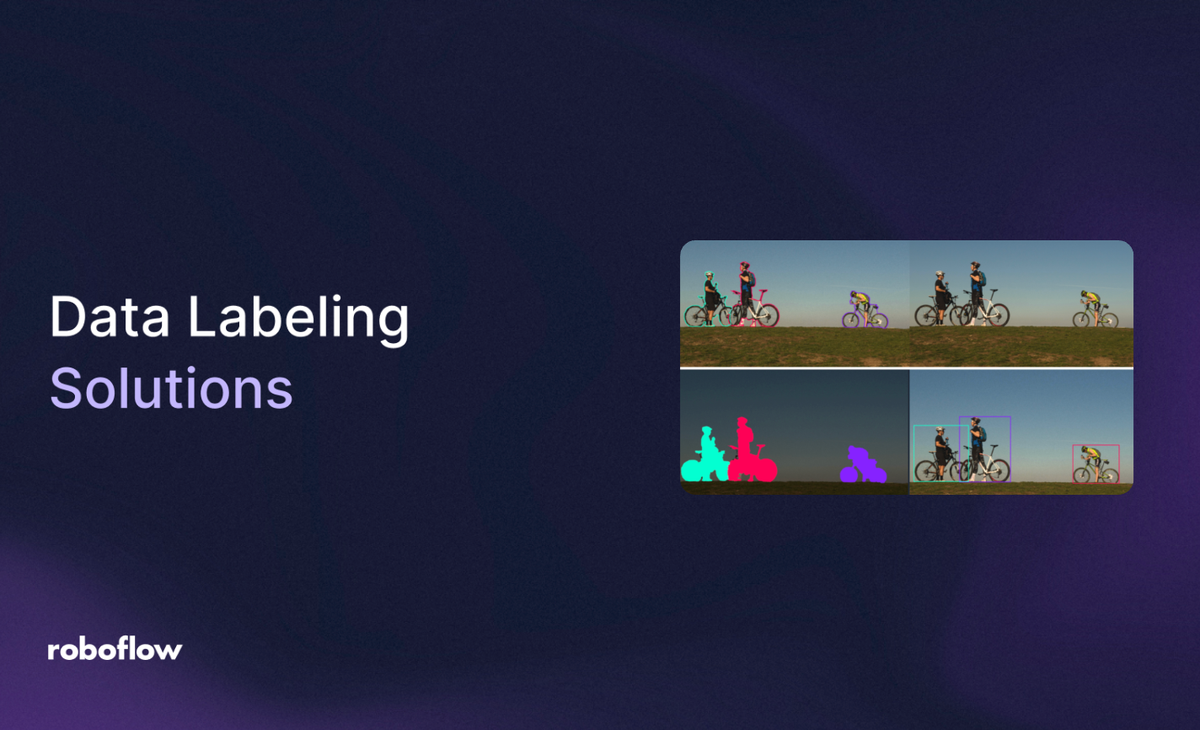
Every machine learning model starts with data. But raw data alone doesn’t teach a model anything. To learn what’s in an image, video, or dataset, that data must first be labeled. Data labeling, or annotation, is the process of telling a model what it’s looking at so it can learn to recognize those patterns on its own.
Take an example from computer vision: a model that detects bicycle riders. It learns by training on hundreds or thousands of images where bicycles and riders are correctly marked. The more precise and consistent those annotations are, the more accurate the model becomes.
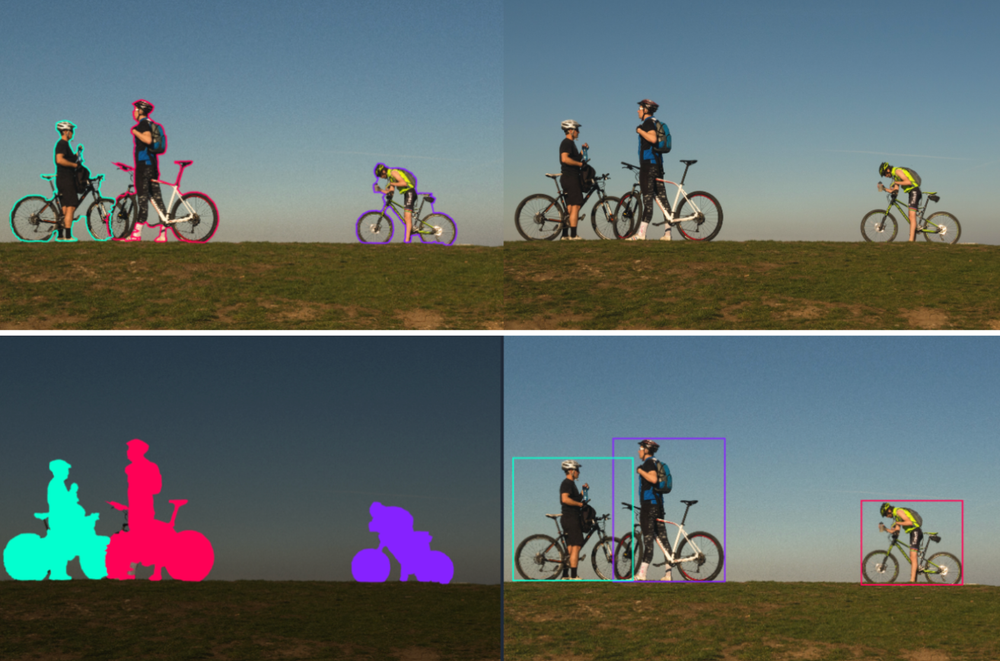
This process, while essential, can be time consuming. That’s why modern labeling tools combine automation, collaboration, and quality control to accelerate the process without compromising accuracy. The best platforms make it easy to:
- Upload and organize data like images, videos, or text
- Assign tasks to teammates or AI-assisted models
- Review and approve annotations for consistency
- Export clean, structured datasets ready for training
In this guide, we’ll break down what makes a great data labeling platform, then compare five of the most widely used solutions, including Roboflow, Amazon SageMaker, Vertex AI, CVAT, and Labelbox, to help you choose the right fit for your workflow.
Key Data Labeling Solution Features
When comparing options, consider these features.
Annotation Capabilities
A strong data labeling solution should adapt to any task, from drawing bounding boxes and outlining polygons to marking segmentation masks, tagging keypoints, or labeling multimodal datasets. This flexibility means your team can handle every computer vision project in one place, without switching tools.
Automation
For large projects when you want to label thousands of images, automation is critical. Therefore, ideally your solution would also support AI-assisted labeling or model-generated suggestions to automatically draw boxes or segment objects. This automation speeds up annotation work and reduces the effort required for repetitive tasks, although human supervision is must.
Collaboration
Machine learning projects often have a large team with several annotators. Therefore, empowering task assignment, multi-user editing, and version control is important, so that every team member can work together efficiently and track progress.
Quality Control
Accurate models start with accurate labels. To build reliable machine learning systems, your data needs consistent, high-quality annotations. The best labeling platforms make this easy with built-in review workflows, consensus scoring, and validation tools that catch issues early, so your final dataset is clean, consistent, and ready for training.
Integrations
Your data comes from everywhere: cloud storage, sensors, internal tools. The right data labeling solution should connect seamlessly with your existing ML stack through SDKs, APIs, or cloud integrations. When your labeling workflow plugs directly into your MLOps pipeline, exporting and retraining become effortless.
Scalability and Pricing
Finally, choose a data labeling solution that scales with you. Some platforms offer free tiers to get started, while others provide enterprise-grade plans with advanced automation, team collaboration, and dedicated support as your projects grow.
Explore the Best Data Labeling Solutions
Let's take a deep dive into some of the best data labeling solutions.
1. Roboflow
AI-assisted labeling in Roboflow
Roboflow is a feature-rich platform for building computer vision datasets and applications. It offers a complete pipeline from uploading raw data to labeling, augmenting, training, and deploying models. The platform’s labeling environment (Roboflow Annotate) is clean, fast, and flexible. Roboflow enables working with a variety of annotation types such as bounding boxes, polygons, keypoints, and classification tags. Roboflow scales smoothly, and keeps projects organized with versioning and dataset management.
Roboflow also includes AI-assisted labeling tools such as Label Assist, Smart Polygon, Box Prompting, Auto Label. And it supports team collaboration, easily working with team members to accept or reject annotations, see progress, and send instructions. Roboflow also offers a dataset health check to identify class imbalance or annotation errors, automated augmentation to expand datasets, and dataset export that supports many machine-learning formats (including COCO, YOLO, Pascal VOC, and TensorFlow).
Roboflow SDKs and APIs make it easy to integrate with machine learning workflows that enable running inference in Python, deploying models on embedded devices, or connecting labeling output directly into your training pipeline. Roboflow is best suited for startups, researchers, educators, and developers who want a fast, all-in-one computer-vision workflow, and there's a free plan to get started.
Challenges
- Roboflow primarily focuses on image and video data. There is no support for NLP or audio labeling yet.
- Annotation review requires Growth Plan.
2. Amazon SageMaker
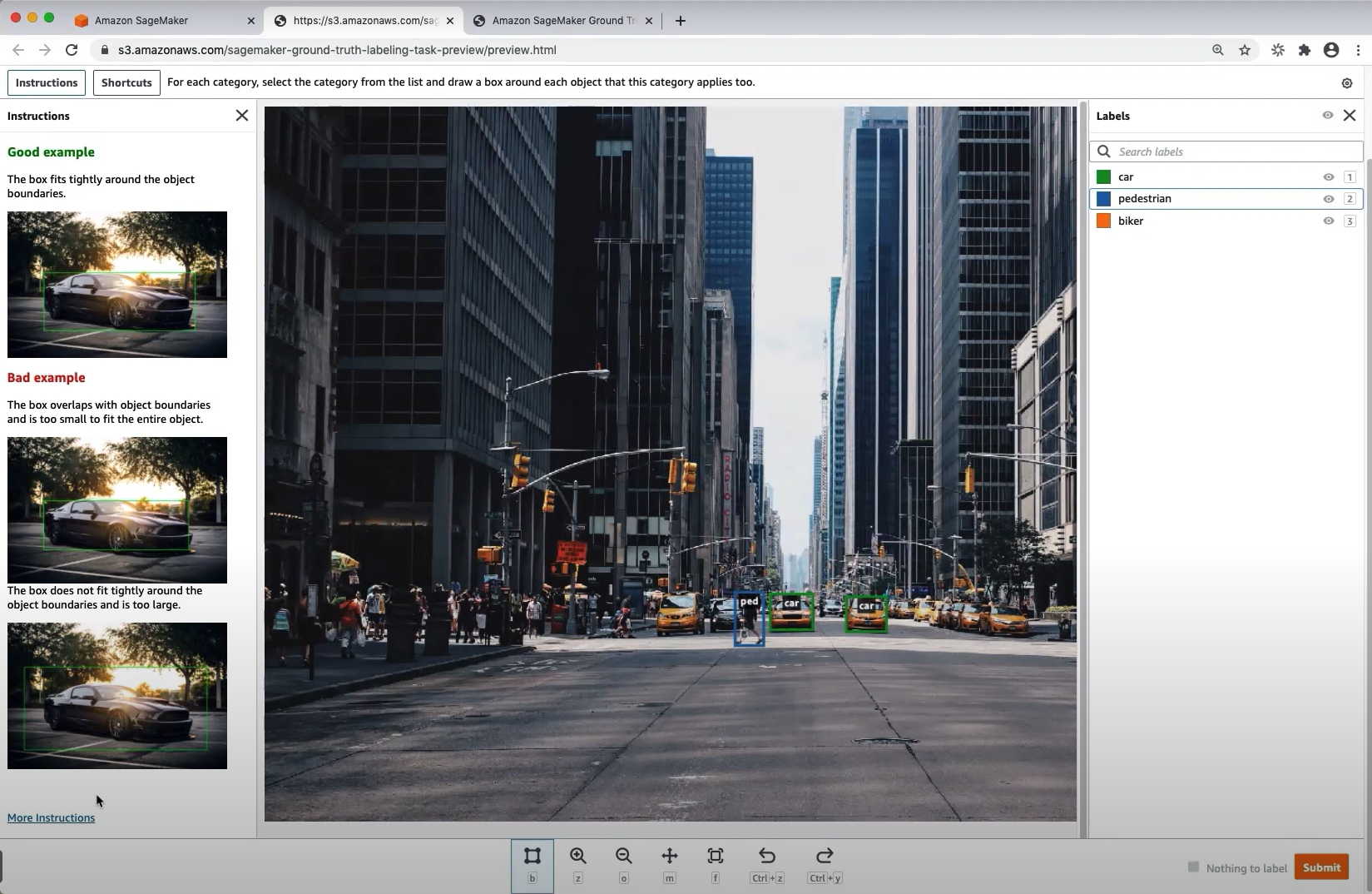
Amazon SageMaker Ground Truth is a fully managed data labeling solution that helps teams create high-quality training datasets quickly and at scale. It supports a wide range of annotation types across text, images, video, point clouds, and even generative AI tasks.
Amazon SageMaker Ground Truth provides worker task templates for built-in task types, some of which also support automated data labeling. What makes it especially powerful is its combination of human and machine labeling. Active learning can be used to automatically label simple examples, while more complex cases are sent to human annotators through Amazon Mechanical Turk, private teams, or third-party vendors. This mix of automation, scalability, and deep AWS integration makes Ground Truth ideal for organizations that need accurate, large-scale annotations without building their own labeling infrastructure from scratch. Amazon SageMaker Ground Truth is good fit for large organizations or enterprise teams already using AWS for training and deployment.
Challenges
- It has a complex setup for new users who are unfamiliar with AWS resources such as S3 buckets, IAM roles, and permissions.
- Prices can increase quickly for large datasets that rely heavily on human labeling.
- It is best suited for AWS environments.
- Its labeling interfaces are more functional and simple compared to other tools.
AWS SageMaker Ground Truth Dataset Labeling Tutorial
3. Vertex AI
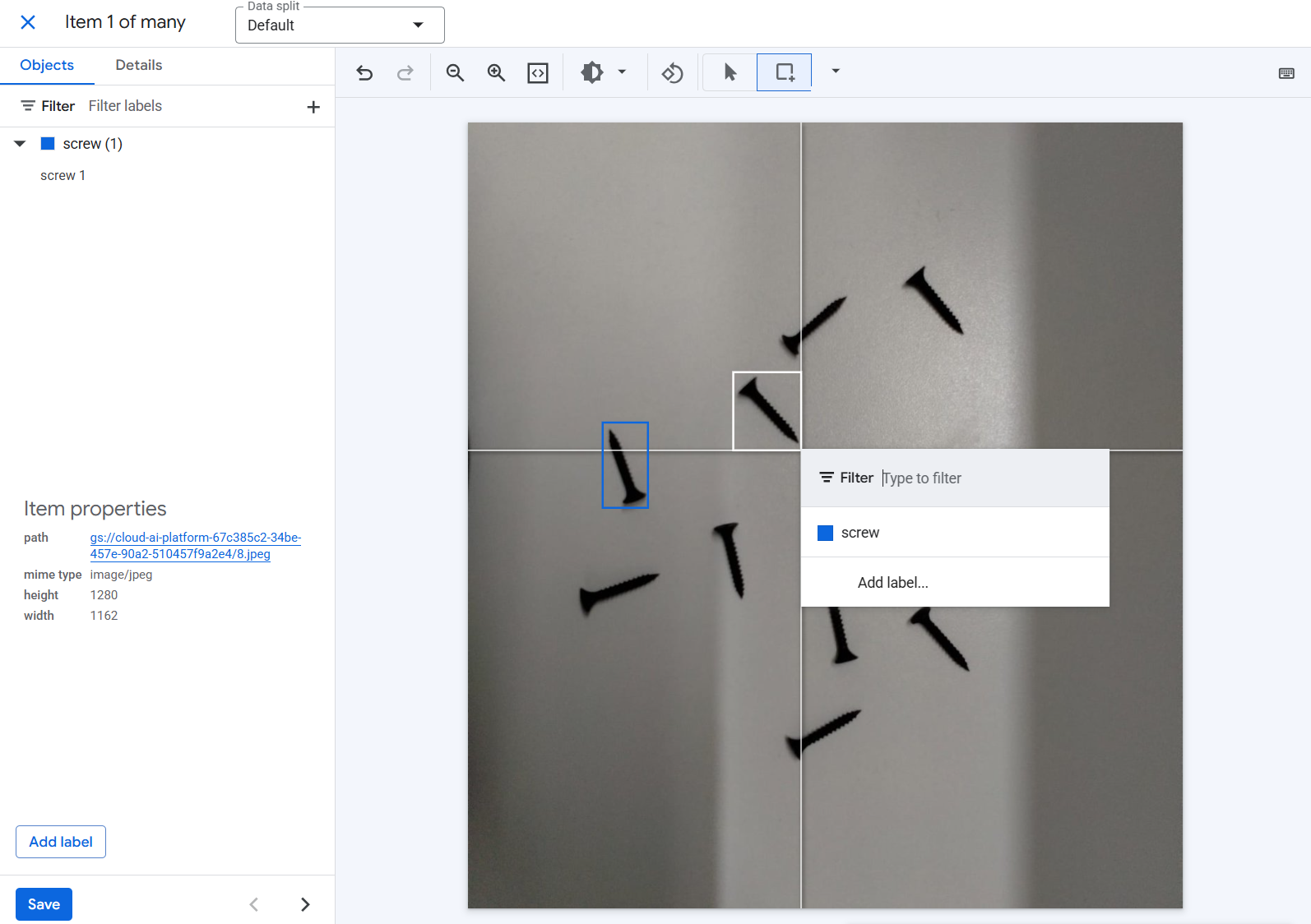
Vertex AI is Google Cloud’s all-in-one machine-learning platform for labeling data, training models, deploying, and keeping everything in one place. You can import and annotate images, text, or video directly in the Google Cloud console.
Once labeling is done, the data can be easily split and exported for training models within Vertex AI. Beyond labeling, Vertex AI also provides AutoML or custom model training. It also enables you to compare and store versions in a model registry, deploy the models with scalable endpoints, and track how they perform in production.
Challenges
- It has limited customization options and automation features compared to dedicated data labeling platforms.
- It depends on Google Cloud infrastructure, so it is less convenient for teams using other infrastructure or services.
- It can be costly for large human labeling tasks, depending on the amount of data and complexity of labels.
4. CVAT (Computer Vision Annotation Tool)
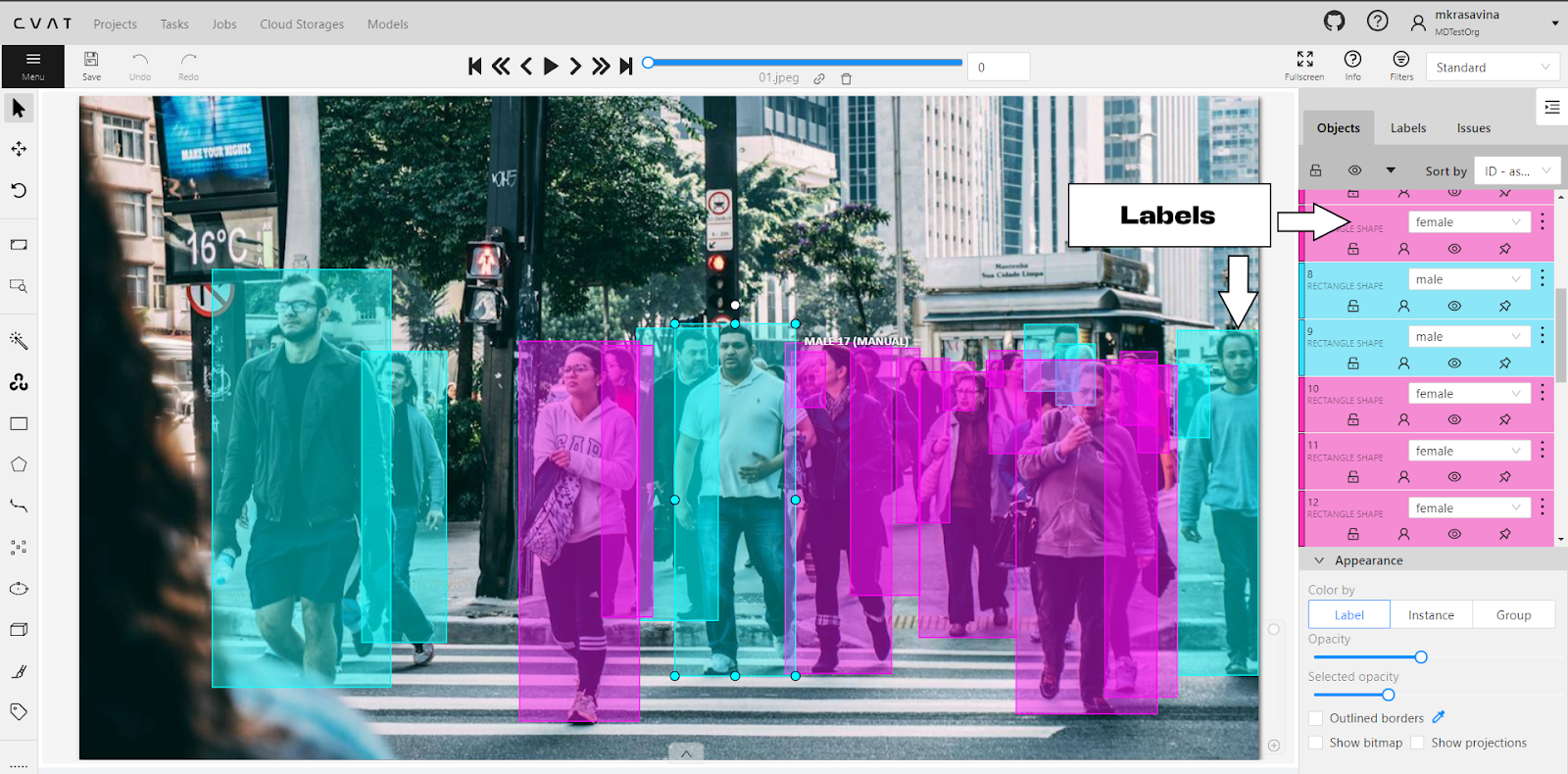
CVAT is a powerful open-source data labeling platform built for computer vision tasks with support for image and video annotation. It is widely used by researchers, startups, and engineers who want full control over their labeling workflow without depending on a commercial cloud service.
You can either self-host CVAT on your own server or use the managed CVAT Cloud version for convenience. It supports almost every kind of annotation task, from bounding boxes, polygons, and segmentation masks to keypoints and 3D annotations. CVAT also includes auto-annotation features to annotate dataset with pretrained models. This combination of automation, flexibility, and open-source freedom makes CVAT an excellent choice for teams that want a customizable, private, and cost-effective labeling solution.
Challenges
- It requires manual setup and maintenance if you host it yourself, which can be technically challenging for beginners.
- Its user interface is basic and more functional.
- It is mainly designed for computer vision data and does not support text or audio labeling.
How to Label Images for Object Detection with CVAT
5. Labelbox
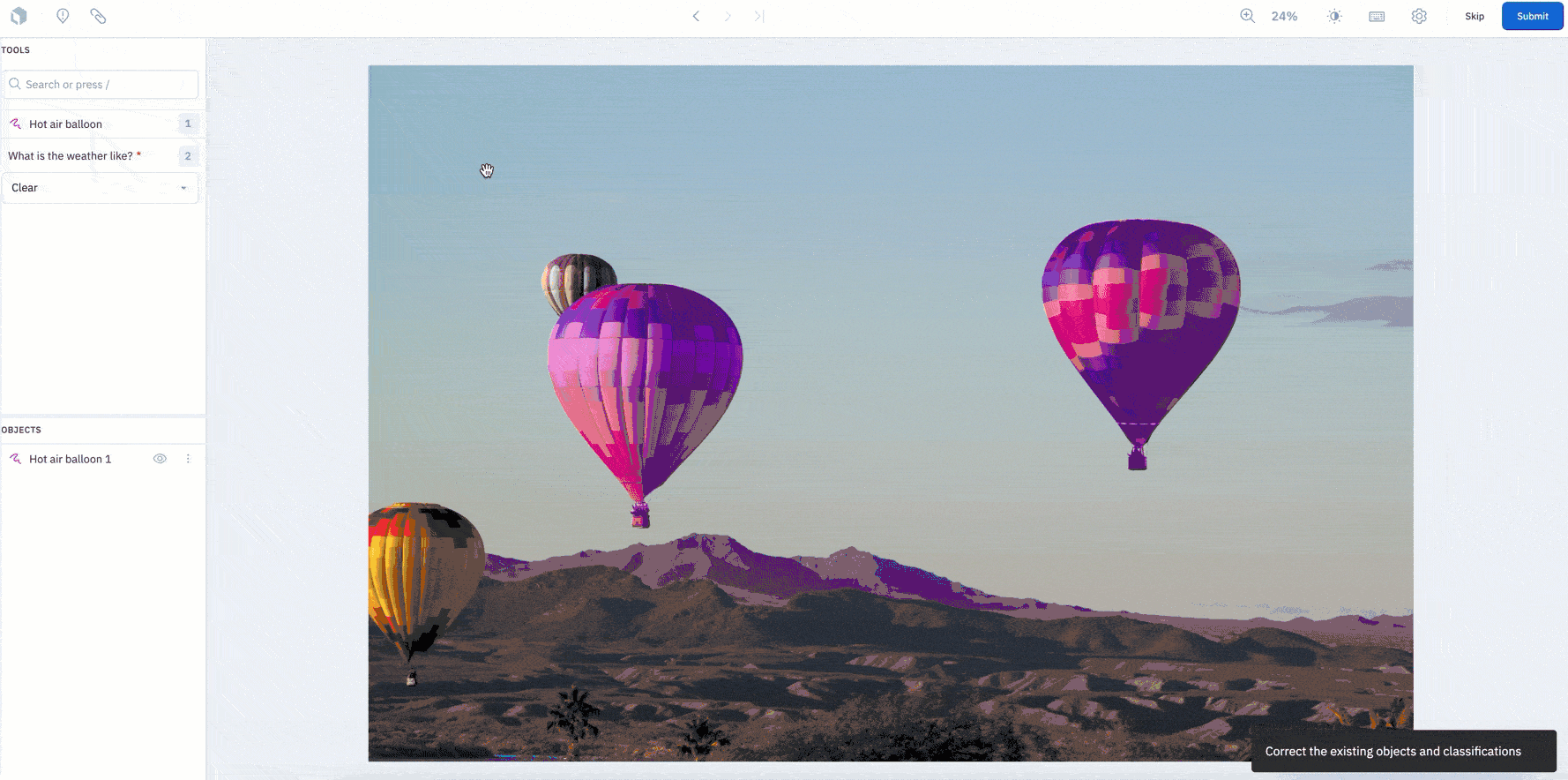
Labelbox is a powerful data labeling and management platform built to help teams create, curate, and improve machine learning datasets at scale. It provides a clean web interface for labeling images, videos, text, and geospatial supporting multiple annotation types such as bounding boxes, segmentation masks, and text tagging.
Labelbox stands out for its AI-assisted labeling, which can automatically pre-label data using model predictions to save time and reduce manual effort. It also includes strong quality control tools, data curation features, and collaboration workflows that make it ideal for large teams.
Labelbox supports integrations for AWS, GCP, and Azure, as well as an extensive Python SDK and APIs. It is a combination of automation, scalability, and analytics which makes it good choice for organizations that need a structured, enterprise-grade data-labeling solution.
Challenges
- Large projects can become costly depending on data size and team usage.
- It may not be very user friendly for beginners.
Learn more about data labeling platforms.
Data Labeling Solution Conclusion
Data labeling is an important step in your machine learning workflow. So selecting the right data labeling solution can make a difference. Choosing a tool that matches your data type, automation needs, and deployment goals is key. These platforms can save time, improve annotation accuracy, reduce costs, and integrate with your existing training pipelines.
Ready to begin labeling your own computer vision dataset?
Get started free with Roboflow Annotate, and begin organizing, labeling, and preparing your data in just a few clicks.
Cite this Post
Use the following entry to cite this post in your research:
Timothy M. (Oct 23, 2025). Top Data Labeling Solutions. Roboflow Blog: https://blog.roboflow.com/data-labeling-solutions/
